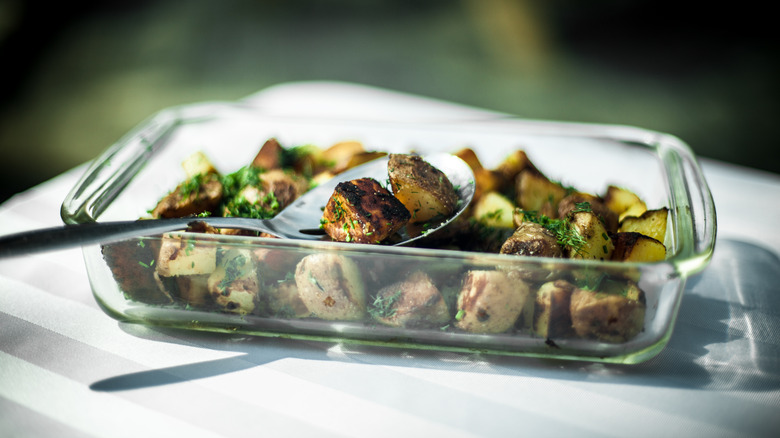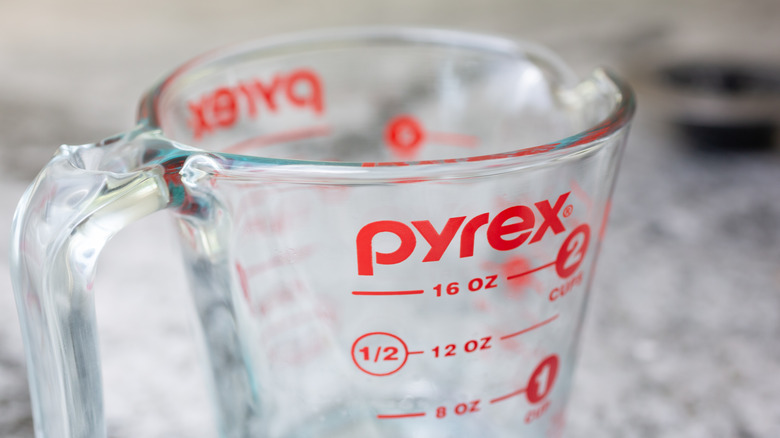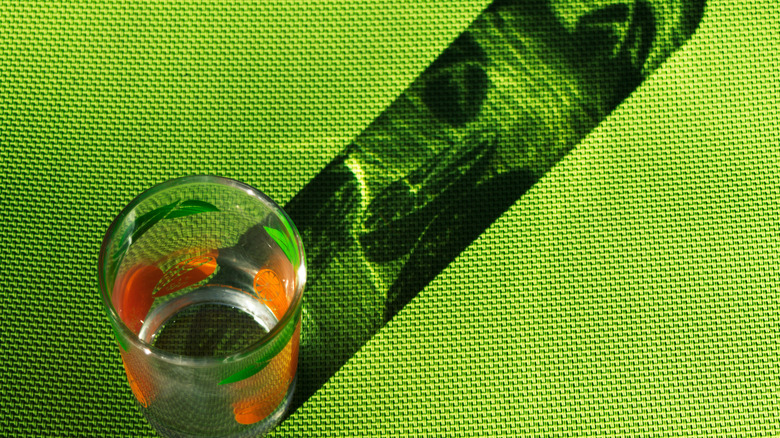Pyrex And Anchor Hocking: Are They Really That Different?
If you're lucky enough to have access to — or better yet, inherit — a trove of vintage cookware from your grandparents, you'll probably come across at least a couple of glass baking dishes. Some of them might be sheer or amber, while others might be semi-opaque milk glass painted in bright colors and etched with wholesome floral motifs that gesture to a bygone era when people cooled pies on windowsills.
The dishes might all look like they belong to the same company, but if your relatives are anything like the average American cookware collector, they'll boast a mix of Pyrex and Anchor Hocking pieces. Both brands have been around for over a century, so suffice it to say they share equal footing in the market — each with their own fan clubs whose members occasionally cross over to the other side. You might call them the Beatles and the Stones of glassware. Here's how they compare.
They're pretty similar
Every brand needs a competitor in a capitalist economy, but that doesn't mean two competing brands need to offer completely distinct products. In the case of Pyrex and Anchor Hocking, an untrained eye might not see many differences at all, aside from the labels. Both brands make cookware that can withstand oven temperatures of up to 425 degrees Fahrenheit, making them great for casseroles, pies, and roasted vegetables. That's because both brands use tempered glass, which is much harder to break than standard glass.
Back in the day, Pyrex used to use a material called borosilicate, which is especially shatter-proof. But sometime around the 1950s, the brand started tempering its glass with soda-lime, which is less expensive and supposedly less toxic. With this switch, Pyrex lost a distinguishing factor from Anchor Hocking, which has always tempered its glass products with soda lime. Still, there are still some factors that make the brands unique.
Beyond cookware
If you want to see Pyrex and Anchor Hocking stand out on their own, look beyond their glass cookware. Both companies make a decidedly adorable array of tumblers, coffee cups, saucers, plates, bowls, and serving dishes. And if you don't have a family member who's willing to pass their collection to you, you needn't look further than the internet to find an overwhelming amount of vintage gems in every color of the rainbow.
On that note, any mug or dishware collector worth their salt has at least one Fire-King mug in their possession. The Anchor Hocking milk glass collection is characterized by its distinctive '70s hues, including a sought-after pale green trademarked as Jadeite. We're also a fan of the brand's orange juice glasses (pictured), which come complete with etchings of bright-orange citrus fruit. Over in the Pyrex camp, you can't get more classic than a white milk glass mug with a floral rim around the lip in earthy tones of orange and green.


